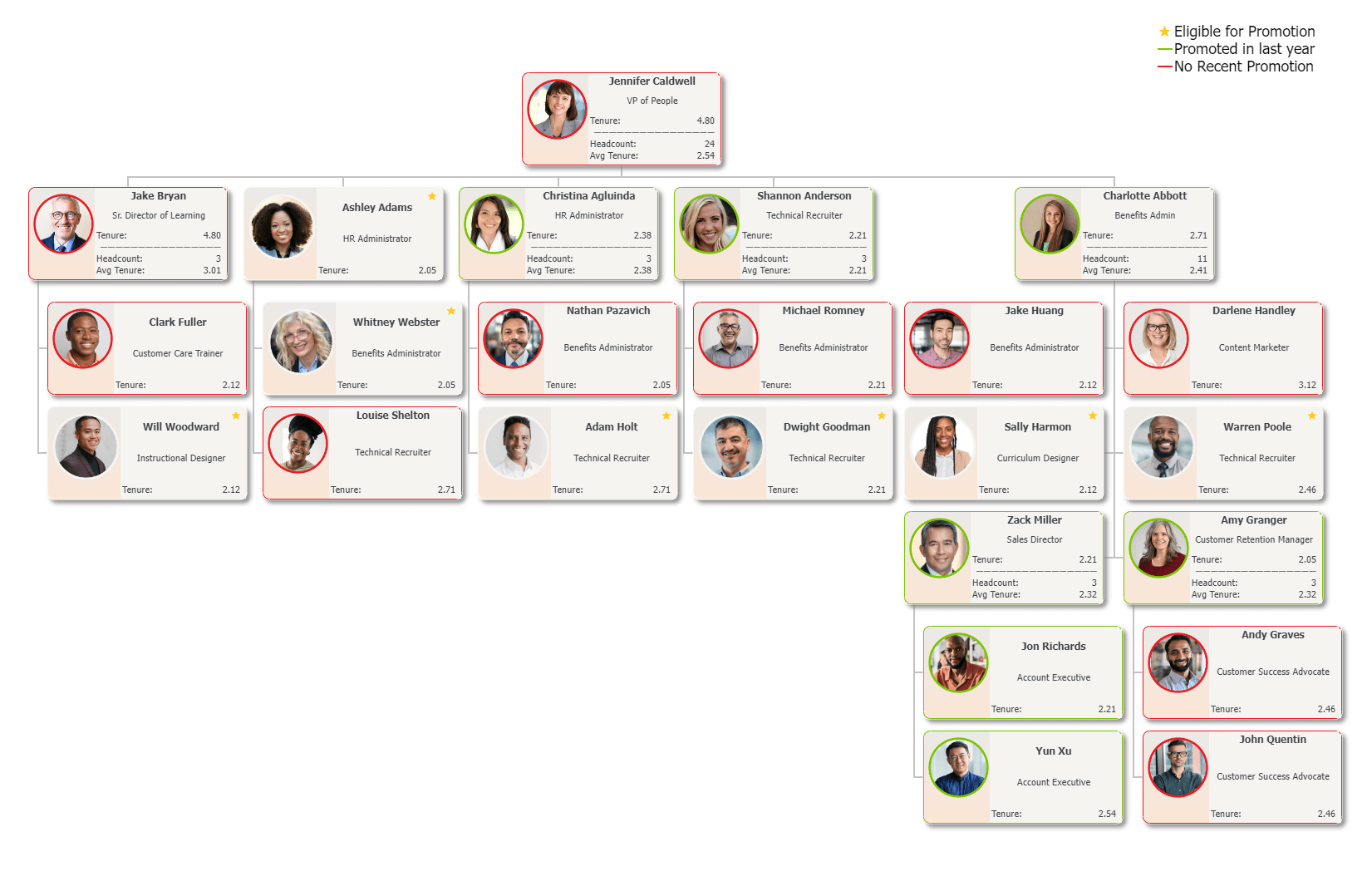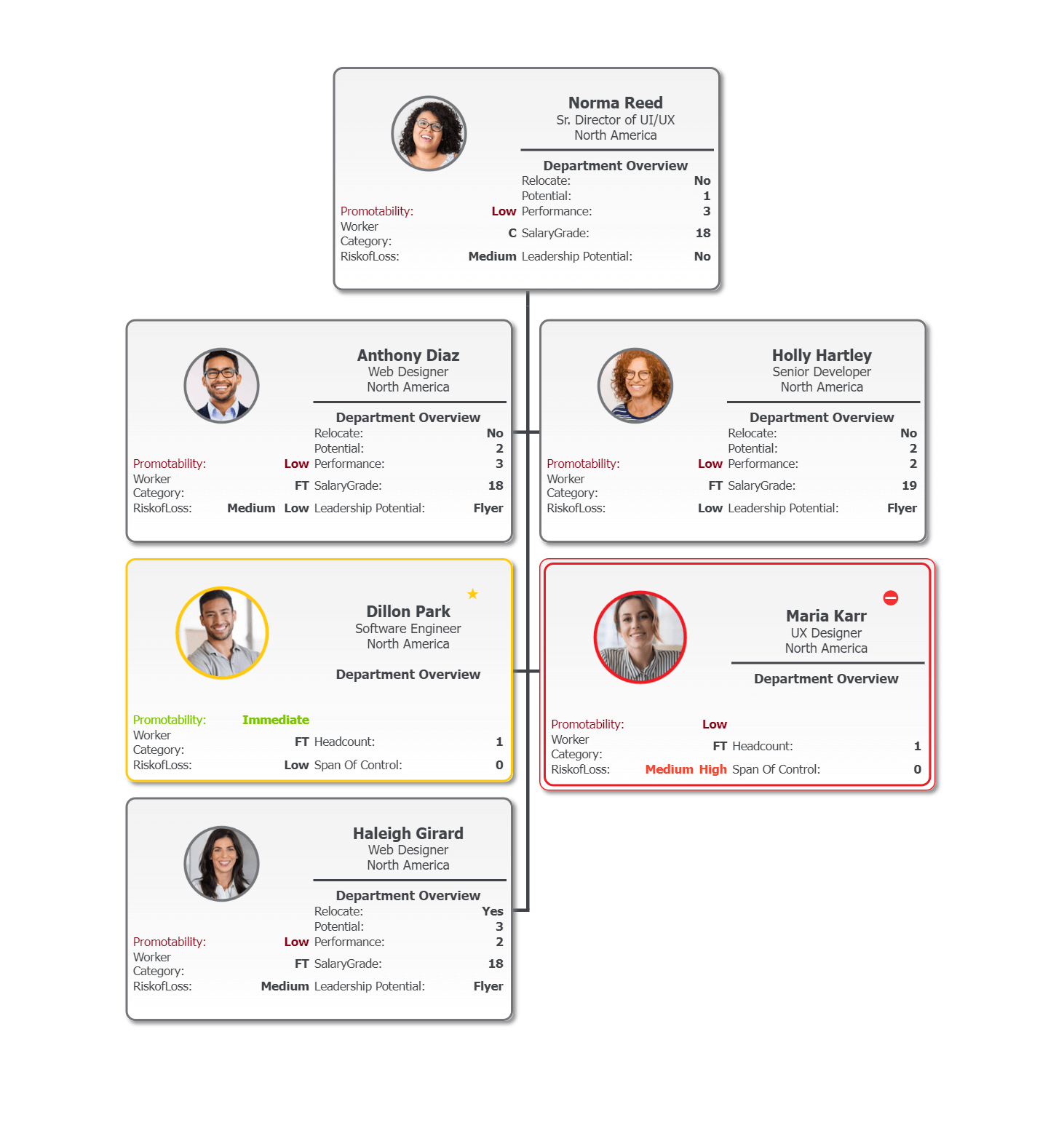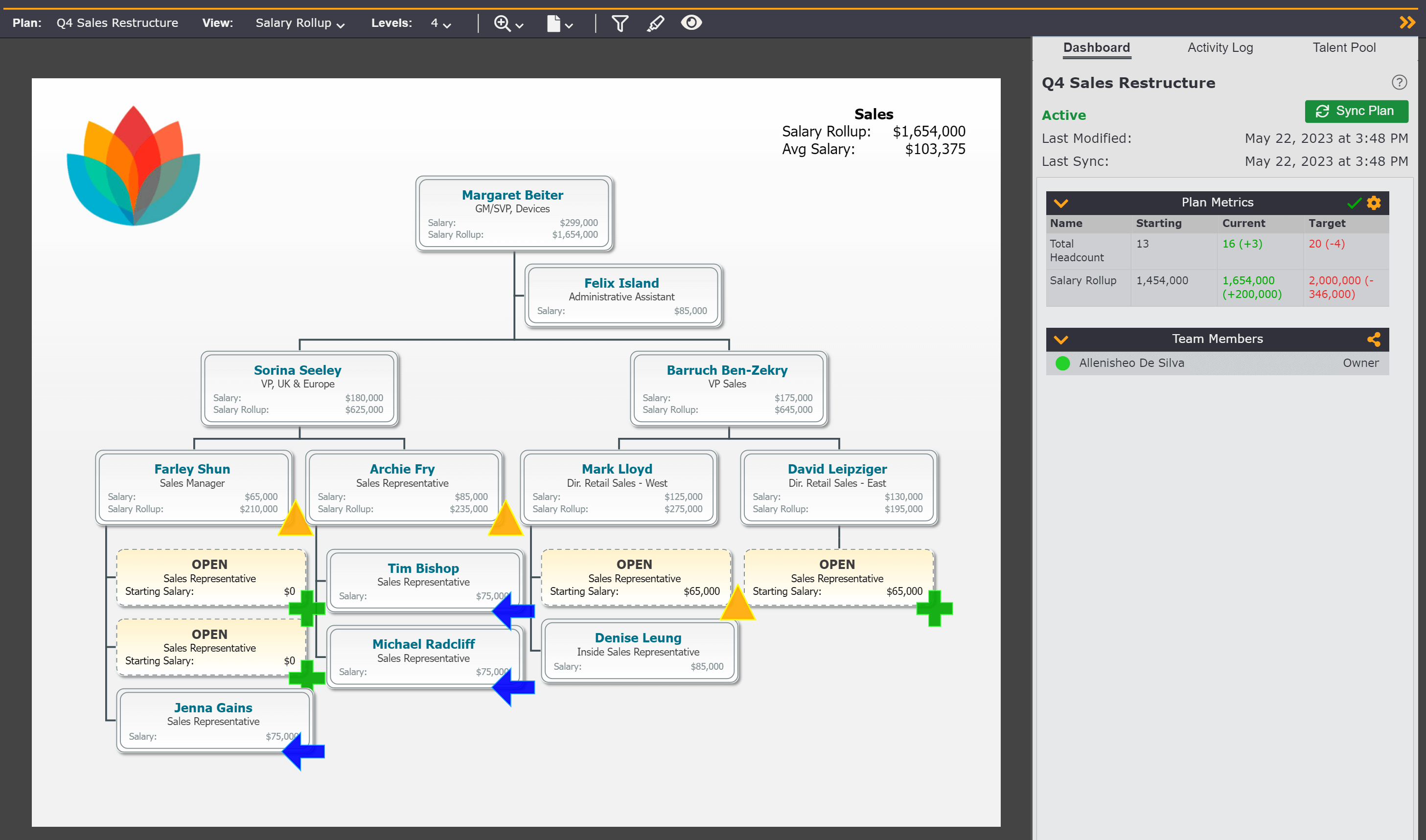April 15, 2020
7:54 AM

A recent analysis of 32 million LinkedIn profiles revealed a startling statistic: There’s only a 76 percent chance of an employee still being at a company 12 months after starting, a 59 percent likelihood after two years, and a 48 percent chance after three years. This alarming turnover rate makes employee retention an invaluable metric for Human Resource Departments.
Another insight from the 2019 LinkedIn study showed that internally mobile employees, whether a sideways move or a promotion, were likelier to stay at their present company. OrgChart’s tenure metric can be used to monitor the time an employee has spent at a company and the time occupying their current role. This allows tracking of possible job stagnation that could, in turn, lead to job dissatisfaction. The turnover ratio in OrgChart is not just a number — it’s a narrative. It tells a story of employee satisfaction, managerial effectiveness, and your company’s allure, offering much-needed insights for HR professionals. That’s just one example, among many, that frames how HR professionals might think about organizational health and view this through the lens of a robust org chart.

Your org chart’s role doesn’t end with its visual appeal. It is a crucial tool for HR data analysis, helping you track vital HR metrics, identify trends, and predict future scenarios.
Interestingly, the LinkedIn study reinforced an often-heard HR adage: “People don’t quit their jobs; they quit their managers.” Its data showed that companies rated highly for “open and effective management” saw significantly better retention. After three years, there was a 48 percent chance of employees still being at those companies. For businesses with low management scores, there was just a 32 percent chance of an employee lasting three years (Cheng, 2019).
OrgChart offers a solution by providing the means to track each manager’s retention rate. Doing so empowers HR professionals with key insights into managerial effectiveness, thereby driving improved retention.
Essential HR metrics are at the heart of understanding your organization’s health and effectiveness. OrgChart enables you to keep track of these vital metrics and establish goals, allowing for continuous progress monitoring and comparison of actual results against targets.
The tool helps HR professionals understand employee turnover ratio, manager effectiveness, and internal mobility trends. The latter is particularly significant, given LinkedIn’s finding that “employees who change positions internally are much, much more likely to stick around than those who stay in the same role.” Whether they are promoted or make a lateral move, either new position is linked to greater retention (Cheng, 2019). Tracking this kind of internal mobility data can give HR professionals a better understanding of how to encourage employee growth within the company, thereby boosting retention.

By presenting the retention rate as a turnover ratio, OrgChart allows HR professionals to delve into the intricacies of different departments, divisions, and managers, offering a comparative lens for evaluating overall organizational health.
When it comes to workforce planning, OrgChart’s Collaborative Planning module is a game-changer. The feature allows HR professionals to model potential changes, offering insights into the likely impact of different strategies. These changes could include alterations in team structures, new hiring plans, or modifications in roles and responsibilities within the existing workforce.
According to LinkedIn, “Someone who was promoted was 55 percent more likely to stay at a company for three years compared to/with someone who remained in the same position, and someone who made a lateral move to a new function was 38 percent more likely to stay.” In addition, “someone at a company where employees are empowered was 34 percent more likely to stay for three years compared to someone at a company seen as giving employees less influence and autonomy” (Cheng, 2019). Regarding workforce planning, these insights can be invaluable in predicting potential scenarios.
OrgChart’s features allow HR professionals to model these changes, offering insights into the likely impact of different strategies, including alterations in team structures, new hiring plans, or modifications in roles and responsibilities within the existing workforce.

The power of OrgChart lies in its ability to provide HR professionals with the tools needed for strategic and optimized workforce planning. By understanding the turnover ratio across different departments and divisions, OrgChart empowers HR teams to make strategic decisions that bolster overall organizational health.
Enhance your employee retention strategies and overall organizational health with OrgChart. It’s not just about managing your organization as it is today, but envisioning and planning for the future. Are you ready to take control of your organization’s health and future? Request a quote now to begin your journey with OrgChart, and unleash the potential of your organization.
Cheng, C. (2019, November 20). 3 Factors Strongly Linked to Better Employee Retention, According to 32 Million LinkedIn Profiles. LinkedIn. https://www.linkedin.com/business/talent/blog/talent-strategy/factors-linked-to-better-employee-retention
Gonzales, J. (2019, September 5). Why Employee Engagement Is Important for Any Business. Glint. https://www.glintinc.com/blog/why-employee-engagement-is-important/